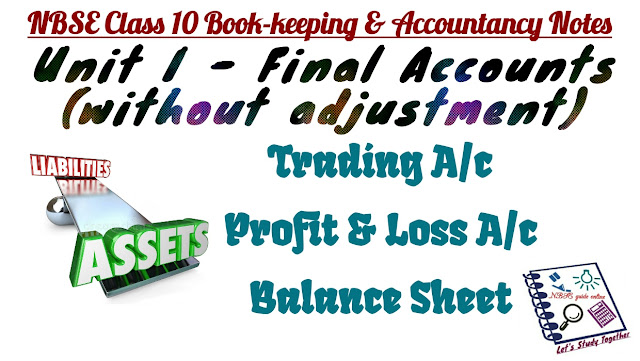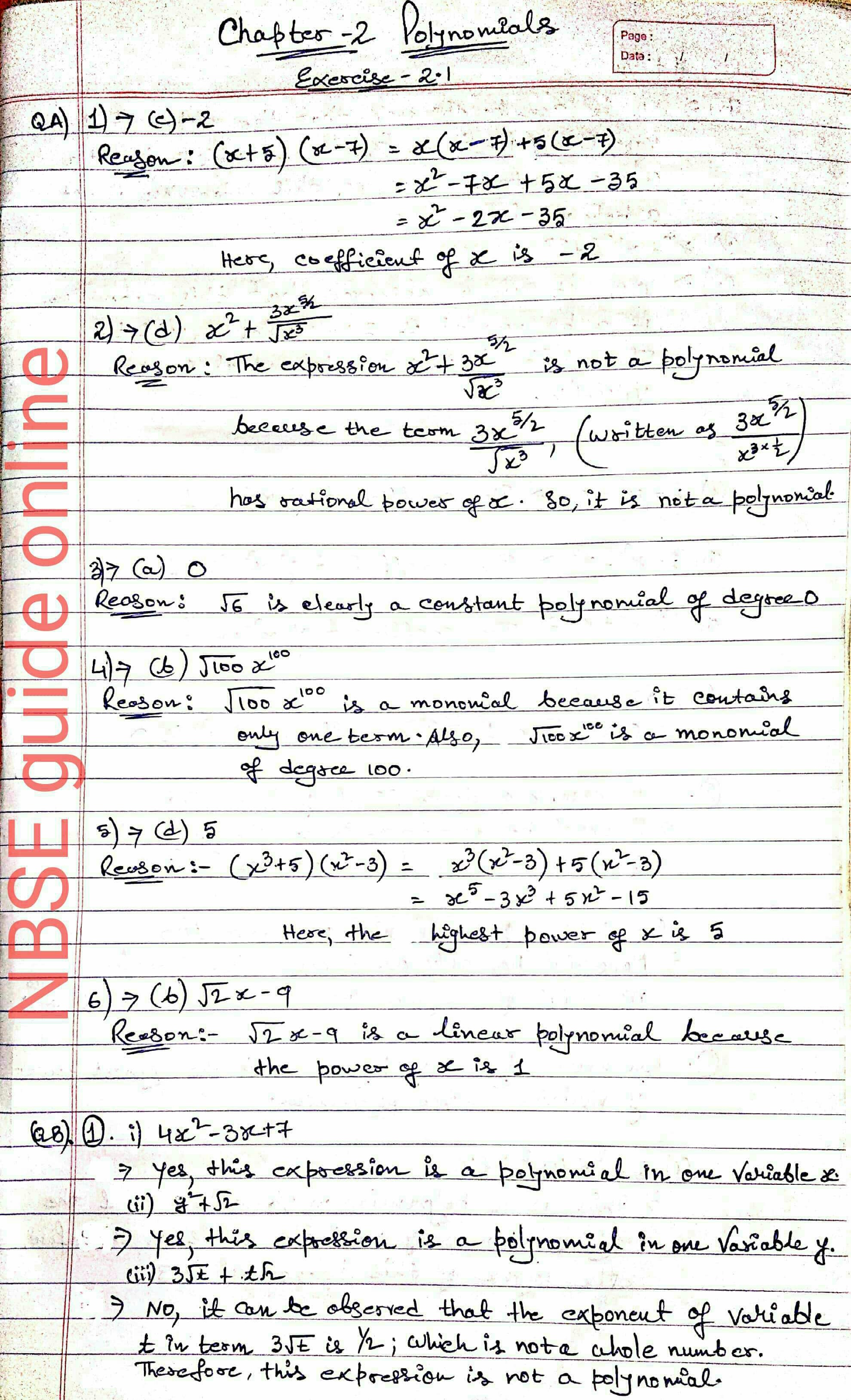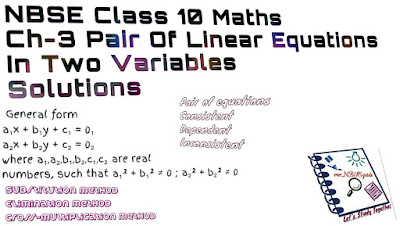Class-10 : Book Keeping & Accountancy - Unit-I : Final Accounts (without adjustments)
Unit I
Final Accounts (without adjustments)
To download Unit I (Final Accounts - without adjustments) notes in PDF for future use please click on the link below.
Theory - CLICK HERE
Practical - CLICK HERE
Note : All the copyright of this PDF content belongs to NBSEguideonline. It is available to all NBSEguideonline users without any subscription.
★★★★★
VERY SHORT ANSWER TYPE QUESTIONS
1. What are the stages of a Final Account ?
Ans : Following are the stages of preparing final accounts -
I. Trading Account.
II. Profit & Loss Account.
III. Balance Sheet.
2. Name three items that should come on the credit side of a Debtor's account.
Ans : Discount Allowed A/c , Sales Return A/c , Cash A/c
3. How are expenses on acquiring goods treated ?
Ans : It is treated as direct expenses and shown on the debit side of the Trading Account.
4. Give three points of difference between Bookkeeping and Accountancy.
Ans : Following are the points of difference between Bookkeeping and Accountancy :
| Basis of Distinction | Book-keeping | Accountancy |
| 1. Meaning | Bookkeeping is an art of recording in the books of accounts the monetary aspect of commercial or financial transaction. | Accounting refers to a systematic body of knowledge prescribing certain rules or principles to be observed while recording, classifying and summarising of transactions. |
| 2. Scope | It is narrow in scope. | It is much wider in scope and includes Bookkeeping as well as Accounting. |
| 3. Function | The main function is to maintain systematic records of transactions of financial nature | It includes the decision making function also on the basis of information provided by Bookkeeping and Accounting. |
5. Show any two difference between Profit & Loss Account and Balance Sheet.
Ans : Following are the difference between Profit & Loss Account and Balance Sheet :
| Points of Difference | Profit & Loss Account | Balance Sheet |
| 1. Objective | To ascertain the net profit or loss of the business. | To understand the financial position of the business. |
| 2. Types of account | Only nominal accounts are entered. | It records personal and real accounts |
| 3. Specific date / period | It shows the position of the accounting period, generally a year. | It shows the position of assets and liabilities on a particular date. |
| 4. Format | It is a ledger account. It has debit & credit side. | It is a statement not an account. The headings of the two sides are "Liabilities" & "Assets" |
SHORT ANSWER TYPE QUESTIONS
1. What are the main rules for debiting and crediting various accounts ?
Ans : The main rules for debiting & crediting various accounts are given below :
2. What is Trading Account ?
Ans : An income statement prepared with the cost of raw materials, purchases and direct expenses (expenses on acquiring & manufacturing goods) to ascertain gross profit or loss is known as Trading Account.
3. What is the purpose of Balance Sheet ?
Ans : The purpose of preparing a Balance Sheet are as follows :
I. The main purpose of preparing a Balance Sheet is to ascertain the true financial position of the business at a particular point of time.
II. It helps in ascertaining the nature and costs of various assets of the business such as the amount of Closing Stock, amount owing from Debtors, amount of Fictitious assets etc.
III. It helps in determining the nature and amount of various liabilities of the business.
IV. It gives information about the exact amount of capital at the end of the year and the addition or deduction made into it in the current year.
V. It helps in finding out whether the firm is solvent or not. The firm is solvent if the assets exceed the external liabilities. It would be insolvent if opposite is the case.
VI. It helps in preparing the Opening Entries at the beginning of the next year.
4. How so you calculate Gross Profit ? Explain in brief.
Ans : Gross profit is the excess of selling price of the goods over the cost of goods sold. Gross profit is ascertained by preparing a Trading Account. In this account, all the direct costs incurred are deducted from the net sales (sales less sales return), i.e. revenue, to arrive at gross profit. It is the company’s profit before all operating expenses, interest and tax payments. Gross profit is aslo known as gross margin.
The gross profit formula is given as:
Gross Profit = Revenue – Cost of Goods Sold
5. Name some direct and indirect expenses.
Ans : Some direct expenses are : Carriage inward, Freight inward, Landing charges, Wages, Octroi taxes, Excise duty, Import duty etc.
Some indirect expenses are : Salaries, Rent, Office expenses, Lighting, Printing & Stationery, Carriage outward, Freight outward, Travelling expenses, Bad-debts etc.
LONG ANSWER TYPE QUESTIONS
1. What is the utility of Financial Statements ? Why are they important ?
Ans : The main utility of financial statements is to ascertain the financial performance (net profit or net loss) of an enterprise during an accounting period and also to ascertain the financial position of an enterprise at a specified point of time.
Financial statements are important because of the following reasons :
I. To scan the business ability to produce cash and utilize it efficiently.
II. To determine whether the organization has the ability to return its debts.
III. To track the businesses financial results and check if there are any profitability issues.
IV. To obtain financial ratios and show the business condition.
V. To look into specific company’s transactions that are reported along with the statements.
2. What are the objectives of Accountancy ?
Ans : Accountancy refers to a systematic body of knowledge prescribing certain rules or principles or techniques to be observed while recording, classifying and summarising of transactions.
According to Kohler, 'accountancy refers to the entire body of the theory and practice of accounting.'
Following are the objectives of accountancy :
I. Record of financial transactions & events - The main objective of accountancy is to keep a systematic record of financial transactions or events according to specified rules. Complete record of business transactions helps to avoid the possibility of omission and fraud.
II. Determine profit or loss - The second main objective of accountancy is to ascertain the net profit or net loss (financial performance) of the business at the end of a financial year.
III. Determine Financial position - After ascertaining the net profit or loss, Balance sheet is prepared. The main purpose of Balance sheet is to ascertain the true & fair view of the financial position of the business at a particular point of time.
IV. Communicating accounting information to users - Another main objective of accountancy is to communicate accounting information to the various interested parties like owners, investors, creditors, bankers, govt. authorities, etc.
V. Assisting the Management - Another objective of accountancy is to assist the management by providing financial information. They need it for the efficient and smooth running of the business enterprise.
3. Explain the following terms :
I. Current Assets - Current Assets are those which are either in the form of cash or can be easily converted into cash within one year of the date of Balance Sheet.
Current Assets include Cash, Bills Receivable, Debtors, Prepaid Expenses, Accrued Income, Closing Stock etc.
II. Current Liabilities - Current Liabilities are those which are expected to be paid within one year of the date of Balance Sheet.
Current Liabilities include Bank Overdraft, Creditors, Bills Payable, Outstanding Expenses etc.
III. Working Capital - By working capital, we mean the capital which is needed for day to day operations of the business. Funds required for short-term purposes for the purchase of raw materials, payment of wages and for other day-to-day expenses is known as working capital. In simple words, it can be defined as the excess of current assets over current liabilities.
The working capital formula is given as :
Working Capital = Current Assets - Current Liabilities
★★★★★
NBSE notes for Class 10 Book-keeping & Accountancy for all Chapters by NBSE Guide Online are provided here. Just click on the chapter wise links given below.
• Unit II Banking
• Unit III Bank Reconciliation Statement
• Unit IV Bills of Exchange
• Unit V Errors And Their Rectification
• Unit VI Depreciation
The above list comprises all the chapter-wise answers to the questions present in the NBSE book for Class 10 (Book-Keeping and Accountancy) in a very precise and lucid manner, maintaining the objective of textbooks.
★★★★★
| Related Links |
| NBSE Class 10 Mathematics Solutions |
| NBSE Class 9 Mathematics Solutions |
| NBSE Class 9 Book-keeping & Accountancy notes |












Comments
Post a Comment
If you have any doubts please let me know